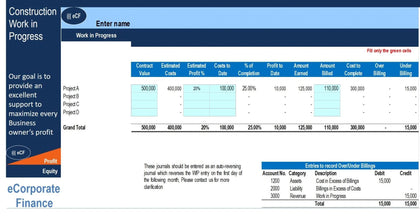Valuation is both an art and a science. The purpose of the template is to facilitate the user to consider multiple ways to value a business in order to triangulate a reasonable valuation.
Outputs – contains a summary of valuation results including M&A comparables, Listed company comparables, Net present value, Gordon’s growth model and Balance Sheet valuations. Valuations consider both historical and forecast data as well as demonstrating the valuation in using both annual or monthly data. Also contains a summary of average assumptions for each valuation type. There is also an output that triangulates an average of all methodologies used.
Assumptions – In general settings set up the valuation template by entering the name, units, model timeline start date and forecast date. Tick the boxes to determine which valuation methodologies to consider. We recommend using as many as possible. In 1.2 enter your P&L and Balance Sheet data. You can select to enter both historical and forecast data, and also choose to enter data annually, monthly, or both (as determined by your settings in 1.1). 1.3 enter your comparable transaction data that relates to the company you’re valuing. 1.4 enter your comparable listed company data. We also recommend applying a liquidity discount as your company will likely be privately owned. Note that with both 1.3 and 1.4 you can choose whether the calculation includes or excludes negative multiples. 1.5 Net present value uses the discounted free cash flow methodology so you’ll need to enter both your terminal growth rate assumption and your discount rate. 1.6 enter the dividend growth assumption (the discount rate is entered in 1.5).
Calcs – sheet contains calculations for the valuation template
Valuation - Best Practice Template

























